Q4.1
From the rate expression for the following reactions, determine their
order of reaction and the dimensions of the rate constants.
(i) 3NO(g) → N2O (g) Rate = k[NO]2
(ii) H2O2(aq) + 3I-(aq) + 2H+ → 2H2O (l) + 3I- Rate = k[H2O2][I-]
(iii) CH3CHO (g) → CH4(g) + CO(g) Rate = k [CH3CHO]3/2
(iv) C2H5Cl (g) → C2H4(g) + HCl (g) Rate = k [C2H5Cl] Solution

(i) 3NO(g) → N2O (g) Rate = k[NO]2
(ii) H2O2(aq) + 3I-(aq) + 2H+ → 2H2O (l) + 3I- Rate = k[H2O2][I-]
(iii) CH3CHO (g) → CH4(g) + CO(g) Rate = k [CH3CHO]3/2
(iv) C2H5Cl (g) → C2H4(g) + HCl (g) Rate = k [C2H5Cl] Solution


Q4.2
For the reaction:
2A + B → A2B
the rate = k[A][B]2 with k = 2.0 × 10-6 mol-2 L2 s-1. Calculate the initial rate of the reaction when [A] = 0.1 mol L-1, [B] = 0.2 mol L-1. Calculate the rate of reaction after [A] is reduced to 0.06 mol L-1 Solution

2A + B → A2B
the rate = k[A][B]2 with k = 2.0 × 10-6 mol-2 L2 s-1. Calculate the initial rate of the reaction when [A] = 0.1 mol L-1, [B] = 0.2 mol L-1. Calculate the rate of reaction after [A] is reduced to 0.06 mol L-1 Solution


Q4.3
The decomposition of NH3
on platinum surface is zero order reaction. What
are the rates of production of N2
and H2 if k = 2.5 × 10-4 mol-1 L s-1?
Solution
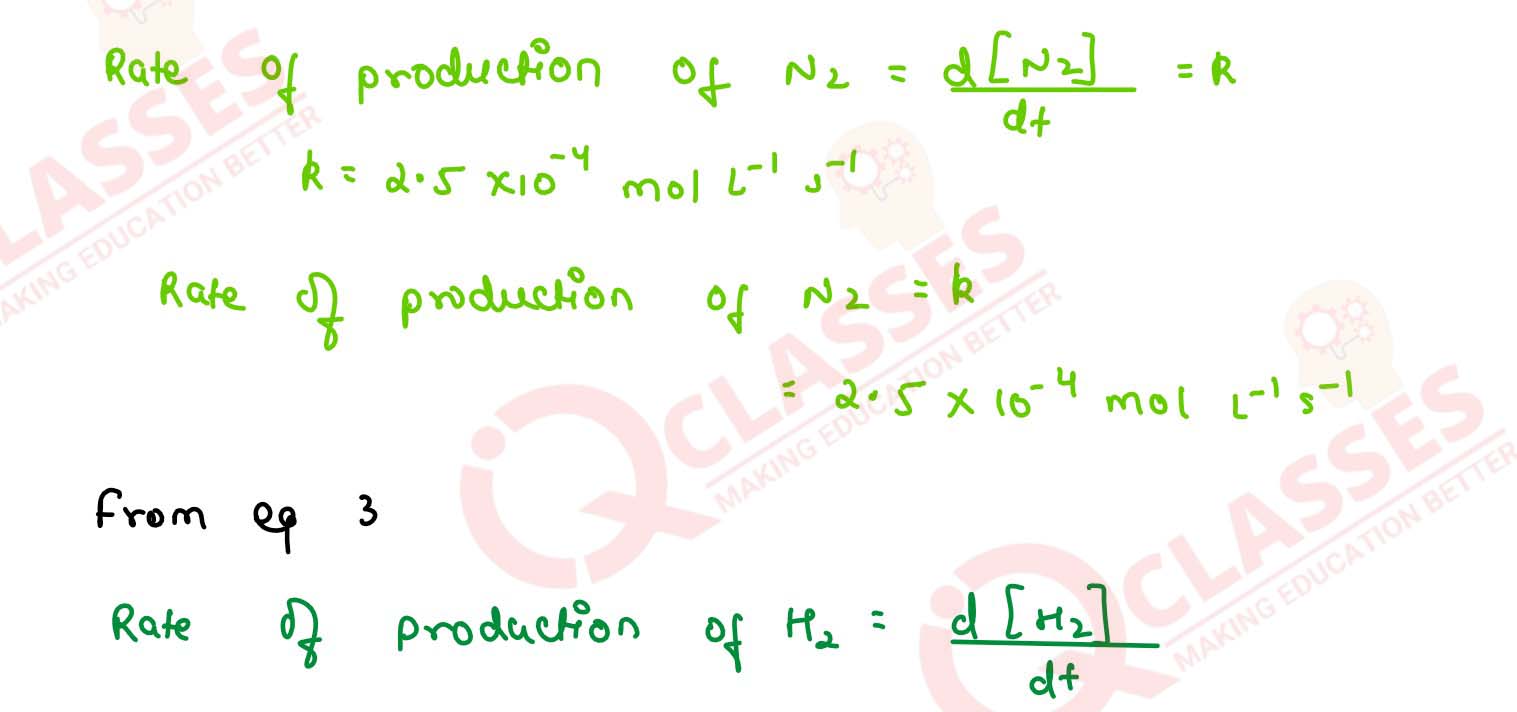





Q4.4
The decomposition of dimethyl ether leads to the formation of CH4
, H2
and CO and the reaction rate is given by
Rate = k [CH3OCH3]3/2
The rate of reaction is followed by increase in pressure in a closed vessel, so the rate can also be expressed in terms of the partial pressure of dimethyl ether, i.e.,
Rate = k(pCH3OCH3)3/2
If the pressure is measured in bar and time in minutes, then what are the units of rate and rate constants? Solution

Rate = k [CH3OCH3]3/2
The rate of reaction is followed by increase in pressure in a closed vessel, so the rate can also be expressed in terms of the partial pressure of dimethyl ether, i.e.,
Rate = k(pCH3OCH3)3/2
If the pressure is measured in bar and time in minutes, then what are the units of rate and rate constants? Solution


Q4.5
Mention the factors that affect the rate of a chemical reaction
Solution




Q4.6
A reaction is second order with respect to a reactant. How is the rate
of reaction affected if the concentration of the reactant is
(i) doubled
(ii) reduced to half ? Solution

(i) doubled
(ii) reduced to half ? Solution


Q4.7
What is the effect of temperature on the rate constant of a reaction?
How can this effect of temperature on rate constant be represented
quantitatively?
Solution




Q4.8
In a pseudo first order reaction in water, the following results were
obtained:

Calculate the average rate of reaction between the time interval 30 to 60 seconds Solution


Calculate the average rate of reaction between the time interval 30 to 60 seconds Solution


Q4.9
A reaction is first order in A and second order in B.
(i) Write the differential rate equation.
(ii) How is the rate affected on increasing the concentration of B three times?
(iii) How is the rate affected when the concentrations of both A and B are doubled?
Solution

(i) Write the differential rate equation.
(ii) How is the rate affected on increasing the concentration of B three times?
(iii) How is the rate affected when the concentrations of both A and B are doubled?
Solution


Q4.10
In a reaction between A and B, the initial rate of reaction (r0) was measured
for different initial concentrations of A and B as given below:

What is the order of the reaction with respect to A and B?
Solution


What is the order of the reaction with respect to A and B?
Solution


Q4.11
The following results have been obtained during the kinetic studies of the reaction:
2A + B → C + D

Determine the rate law and the rate constant for the reaction.
Solution


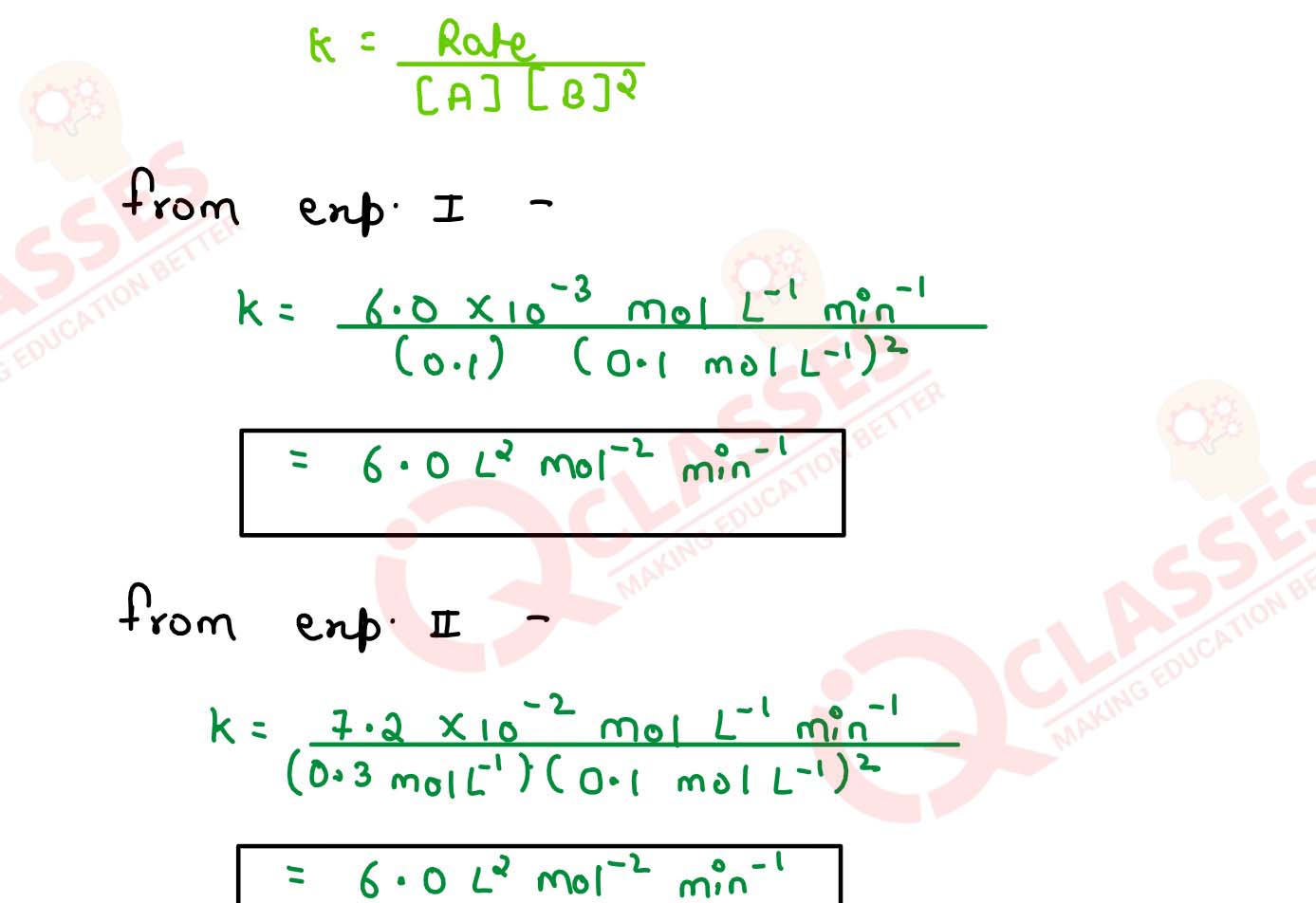
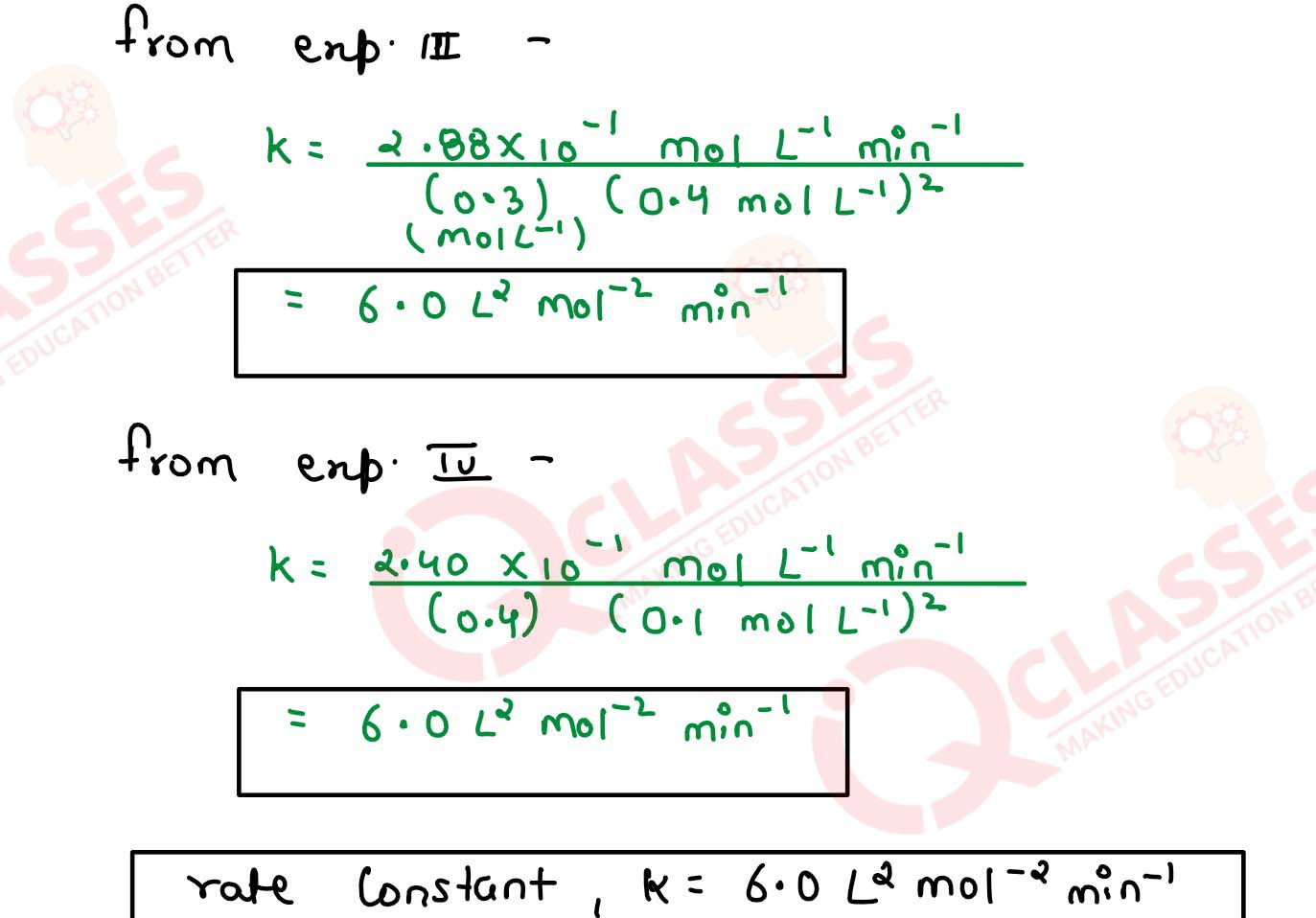

Determine the rate law and the rate constant for the reaction.
Solution





Q4.12
The reaction between A and B is first order with respect to A and zero order
with respect to B. Fill in the blanks in the following table:
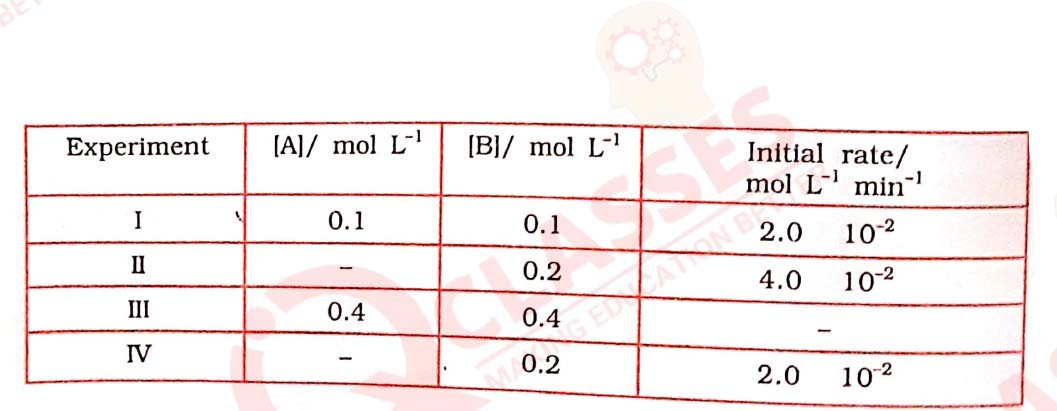
Solution



Solution



Q4.13
Calculate the half-life of a first order reaction from their rate constants given
below:
(i) 200 s-1 (ii) 2 min-1 (iii) 4 years-1 Solution

(i) 200 s-1 (ii) 2 min-1 (iii) 4 years-1 Solution


Q4.14
The half-life for radioactive decay of 14C is 5730 years. An archaeological
artifact containing wood had only 80% of the 14C found in a living tree. Estimate
the age of the sample
Solution


Q4.15
The experimental data for decomposition of N2O5
[2N2O5 → 4NO2 + O2]
in gas phase at 318K are given below

(i) Plot [N2O5 ] against t.
(ii) Find the half-life period for the reaction.
(iii) Draw a graph between log[N2O5 ] and t.
(iv) What is the rate law ?
(v) Calculate the rate constant.
(vi) Calculate the half-life period from k and compare it with (ii)
Solution
[2N2O5 → 4NO2 + O2]
in gas phase at 318K are given below

(i) Plot [N2O5 ] against t.
(ii) Find the half-life period for the reaction.
(iii) Draw a graph between log[N2O5 ] and t.
(iv) What is the rate law ?
(v) Calculate the rate constant.
(vi) Calculate the half-life period from k and compare it with (ii)
Solution
Q4.16
The rate constant for a first order reaction is 60 s-1. How much time will
it take to reduce the initial concentration of the reactant to its 1/16th
value?
Solution


Q4.17
During nuclear explosion, one of the products is 90Sr with half-life of
28.1 years. If 1µg of 90Sr was absorbed in the bones of a newly born
baby instead of calcium, how much of it will remain after 10 years and
60 years if it is not lost metabolically.
Solution




Q4.18
For a first order reaction, show that time required for 99% completion
is twice the time required for the completion of 90% of reaction.
Solution

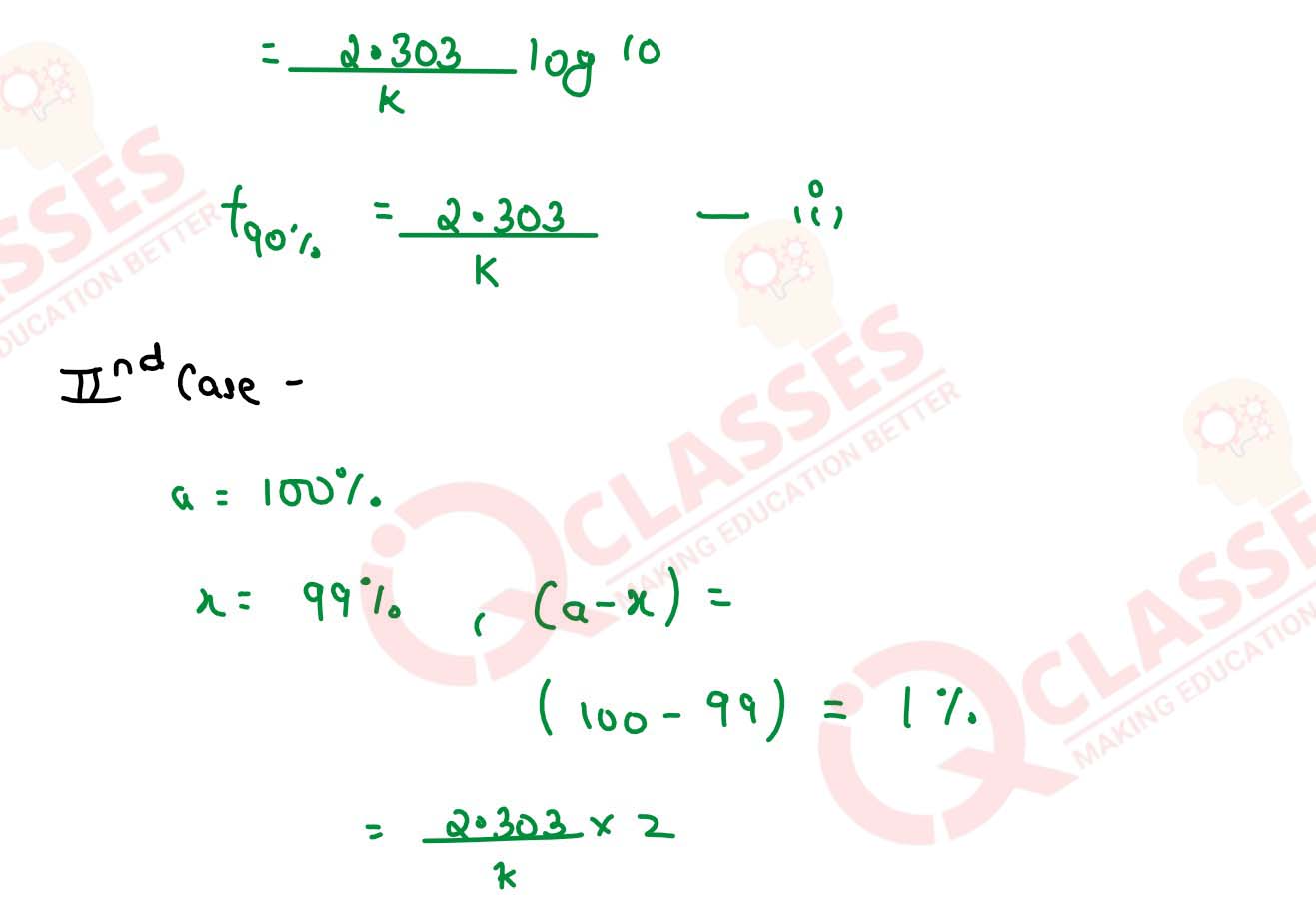
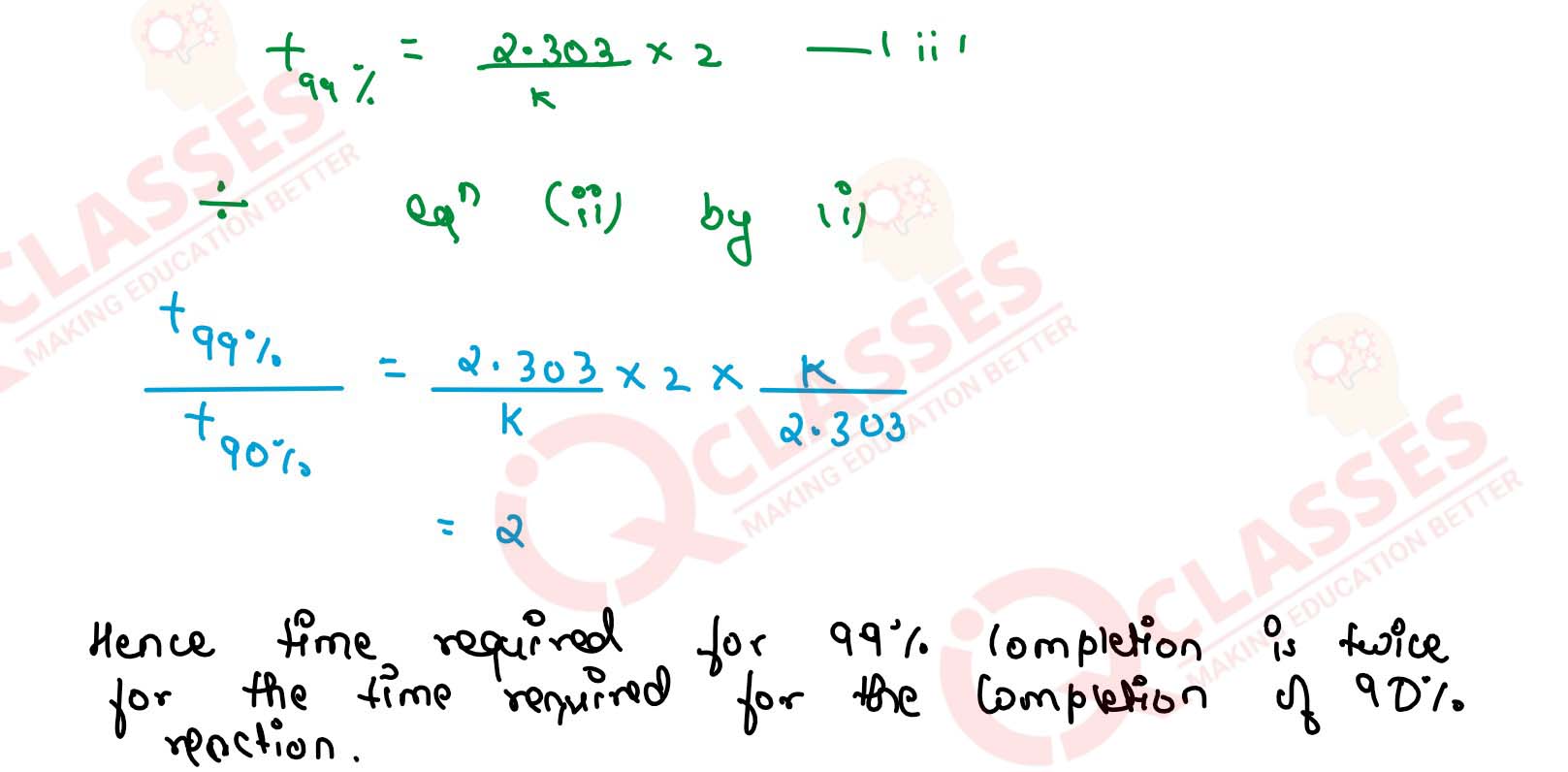



Q4.19
A first order reaction takes 40 min for 30% decomposition. Calculate t1/2
Solution

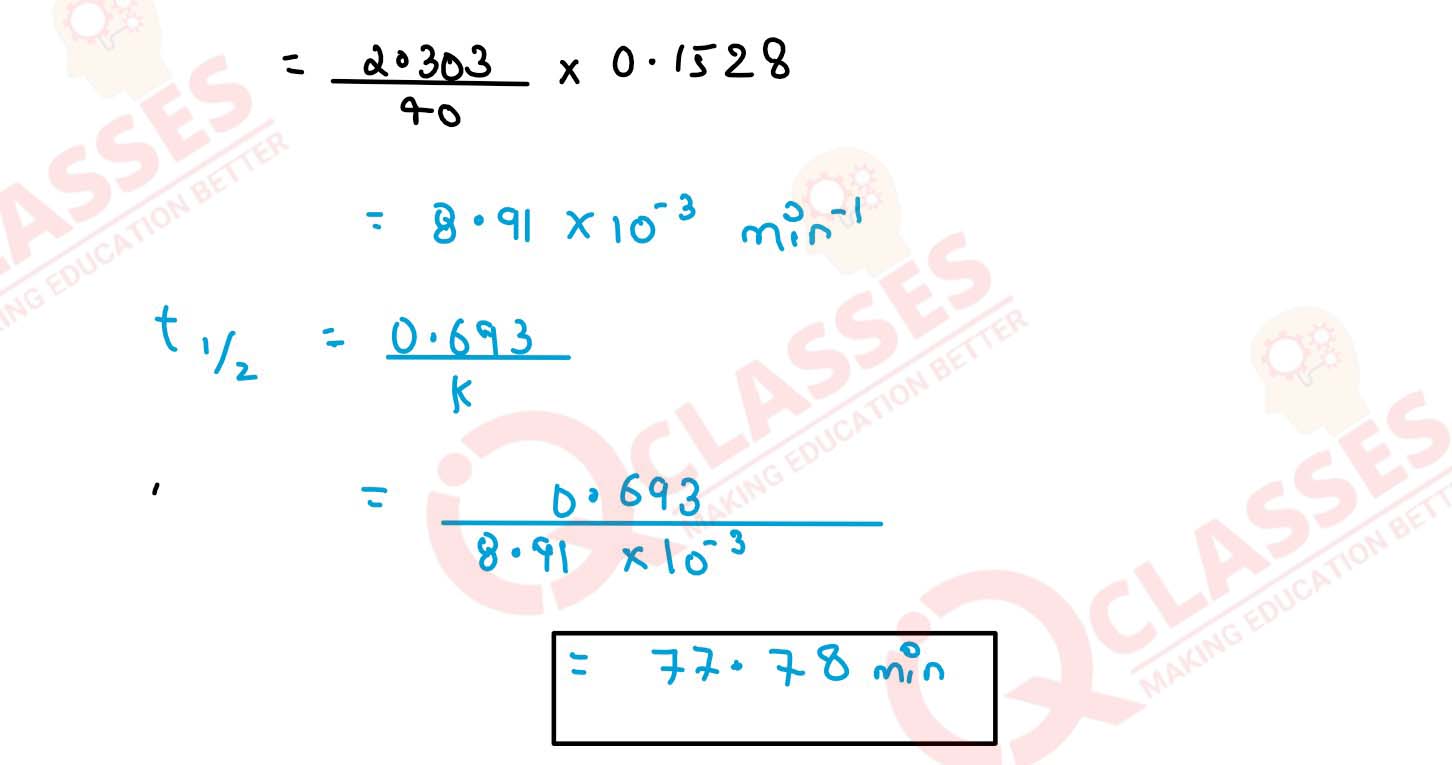


Q4.20
For the decomposition of azoisopropane to hexane and nitrogen at 543
K, the following data are obtained.
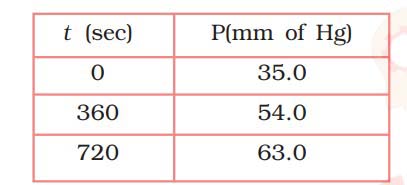
Calculate the rate constant Solution
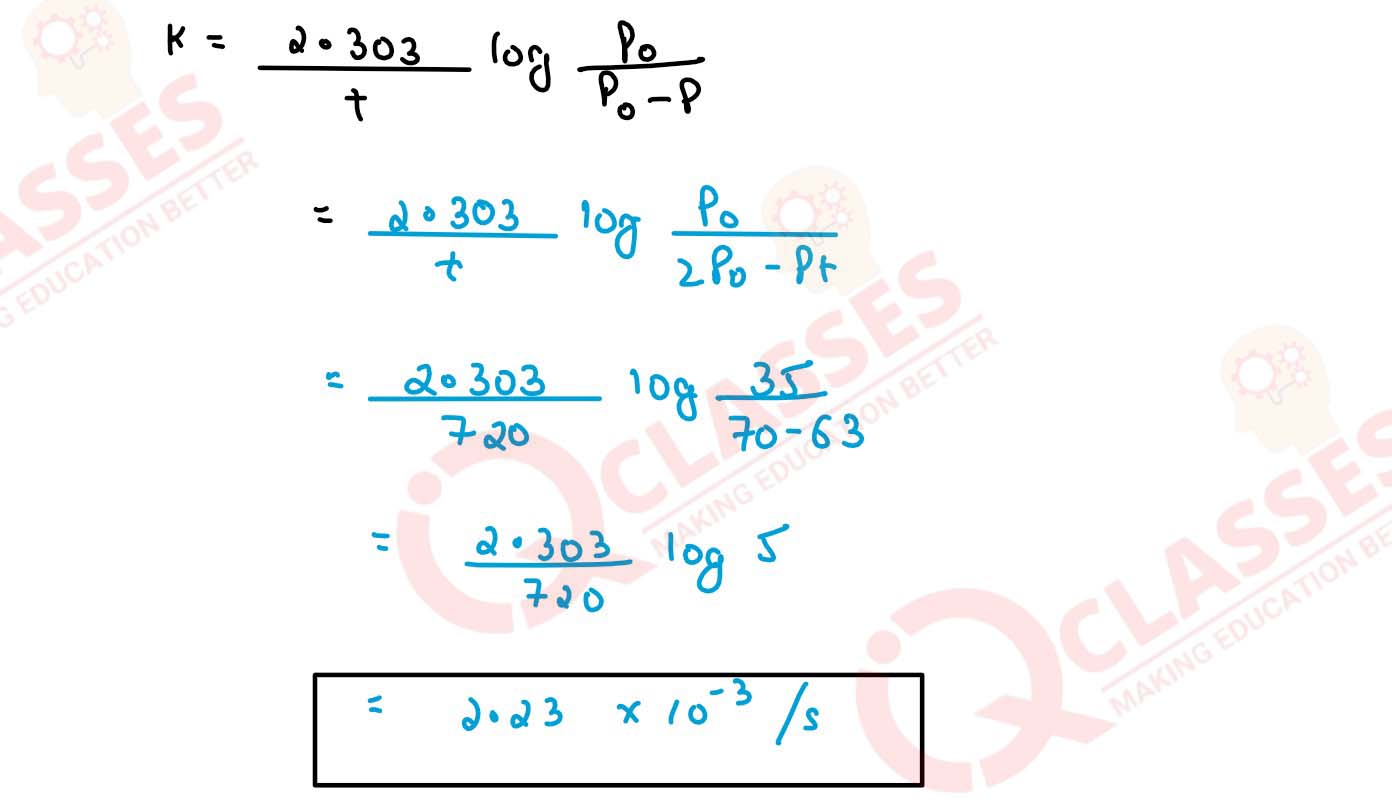

Calculate the rate constant Solution


Q4.21
The following data were obtained during the first order thermal
decomposition of SO2Cl2
at a constant volume.

Calculate the rate of the reaction when total pressure is 0.65 atm. Solution
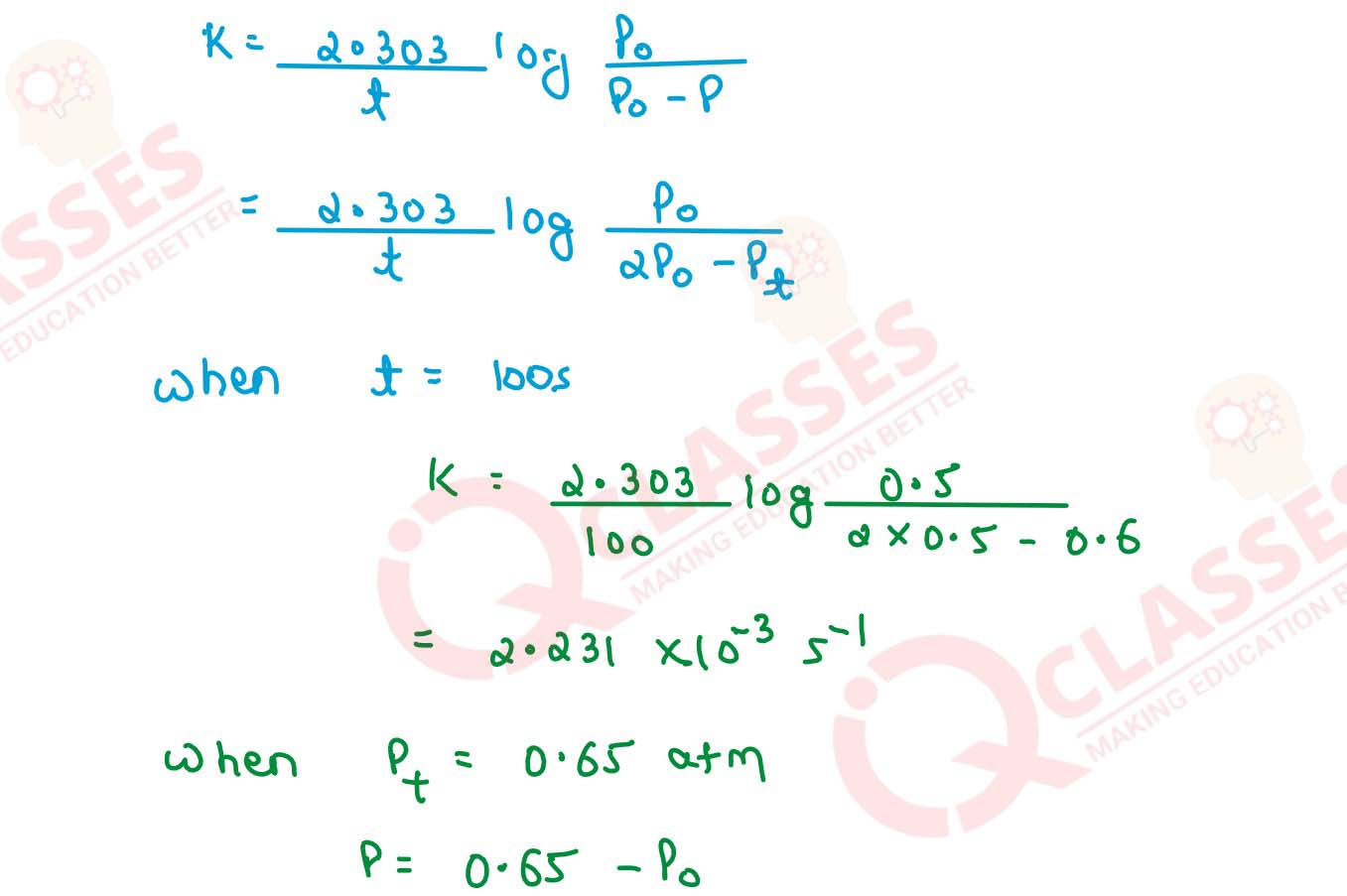
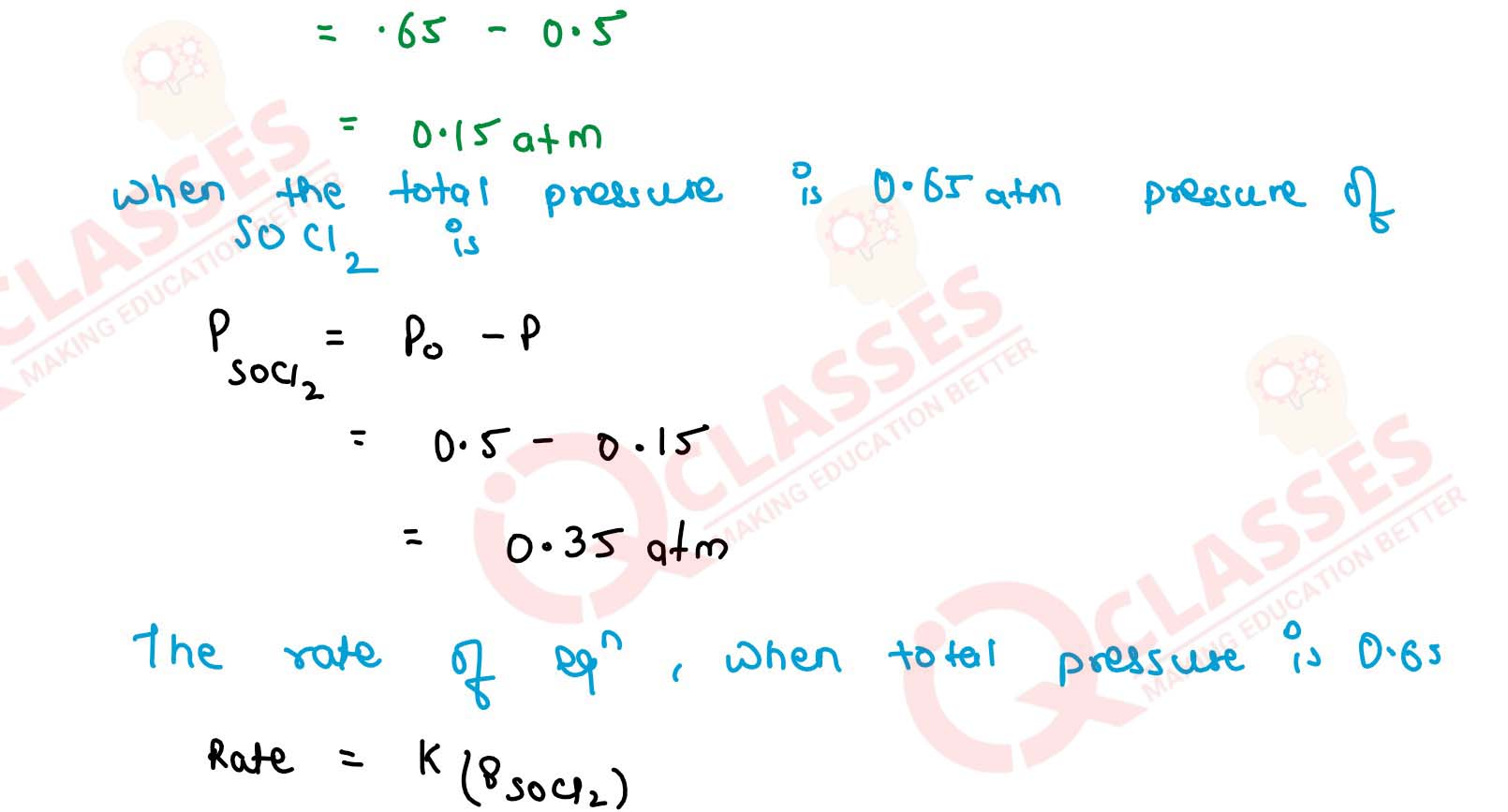


Calculate the rate of the reaction when total pressure is 0.65 atm. Solution




Q4.22
The rate constant for the decomposition of N2O5
at various temperatures
is given below:

Draw a graph between ln k and 1/T and calculate the values of A and Ea. Predict the rate constant at 30° and 50°C. Solution

Draw a graph between ln k and 1/T and calculate the values of A and Ea. Predict the rate constant at 30° and 50°C. Solution
Q4.23
The rate constant for the decomposition of hydrocarbons is 2.418 × 10-5s-1
at 546 K. If the energy of activation is 179.9 kJ/mol, what will be the
value of pre-exponential factor.
Solution

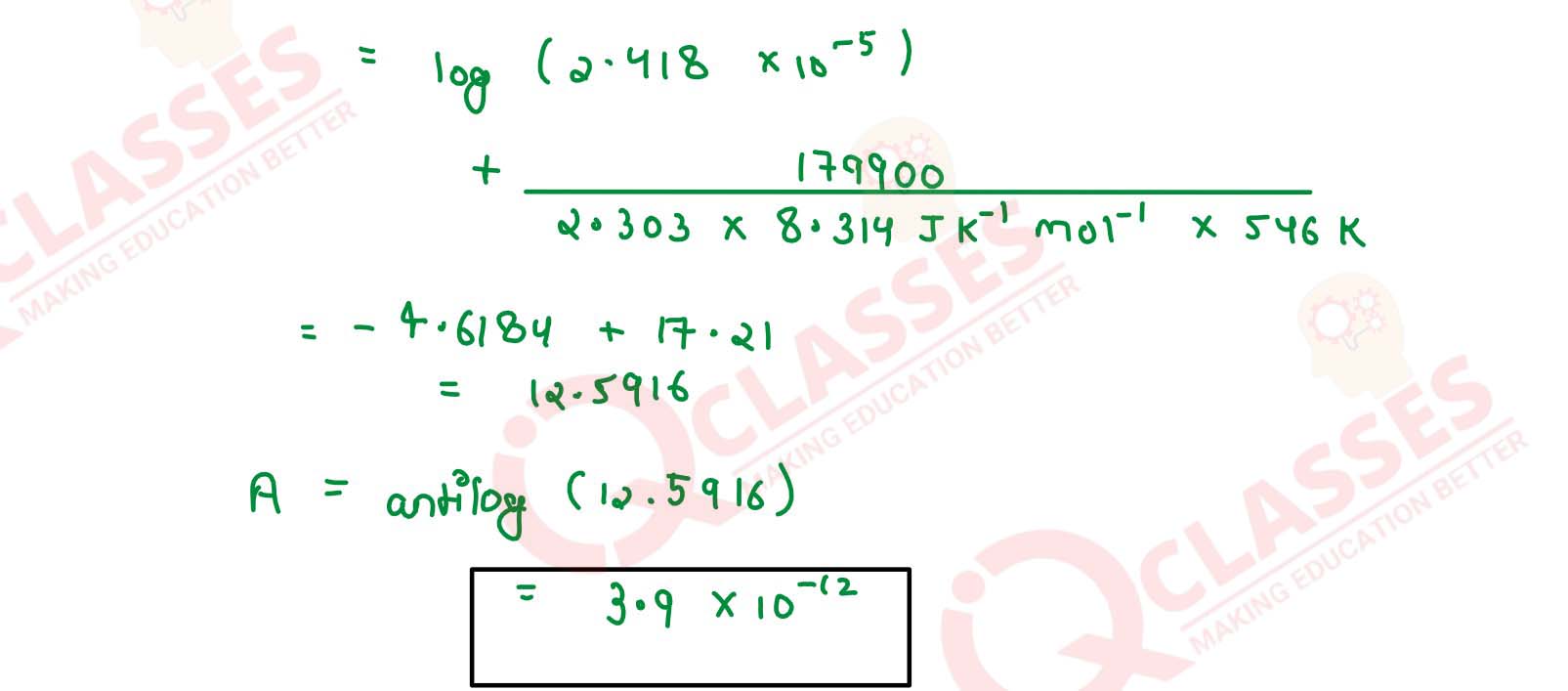


Q4.24
Consider a certain reaction A → Products with k = 2.0 × 10-2s-1. Calculate
the concentration of A remaining after 100 s if the initial concentration
of A is 1.0 mol L-1
Solution

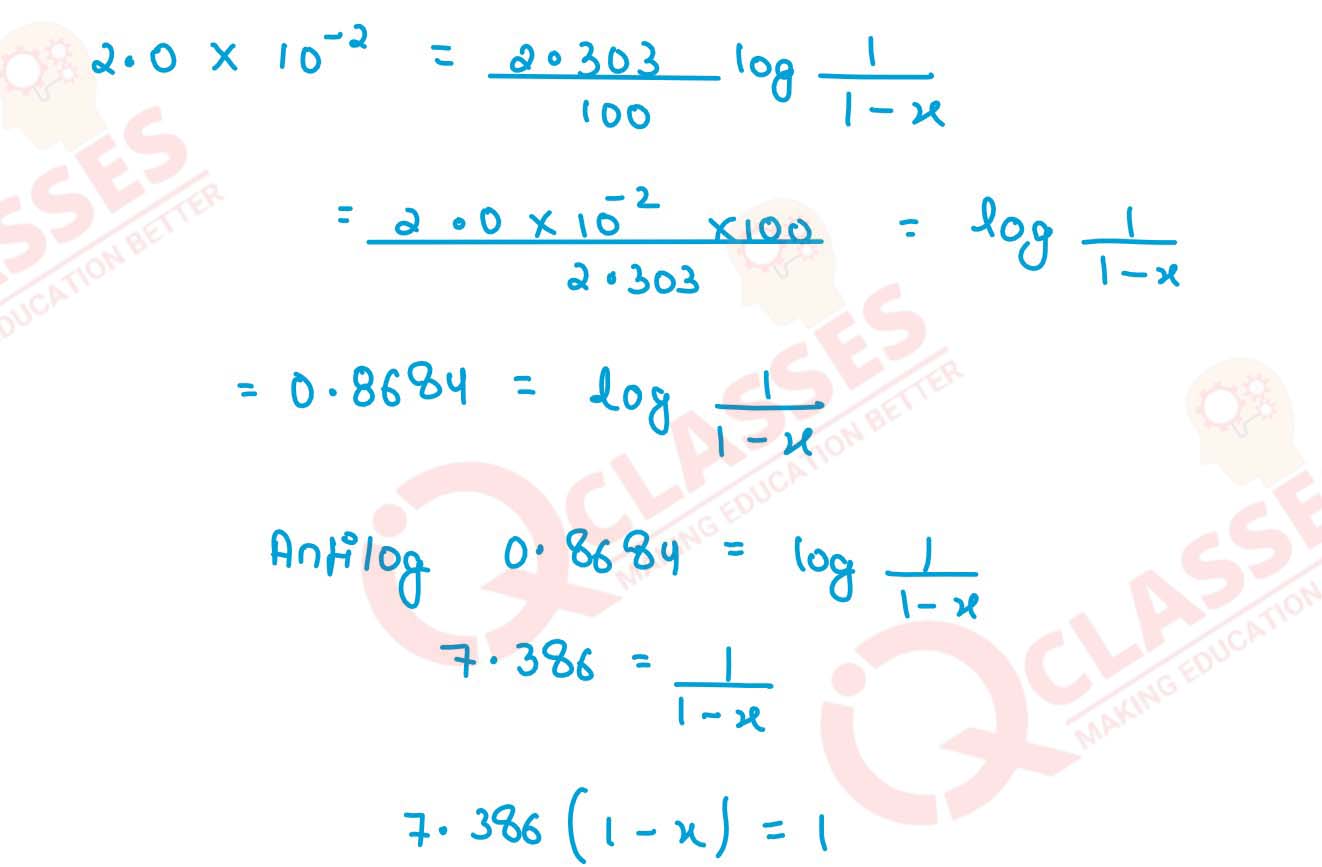




Q4.25
Sucrose decomposes in acid solution into glucose and fructose according
to the first order rate law, with t1/2 = 3.00 hours. What fraction of sample
of sucrose remains after 8 hours ?
Solution

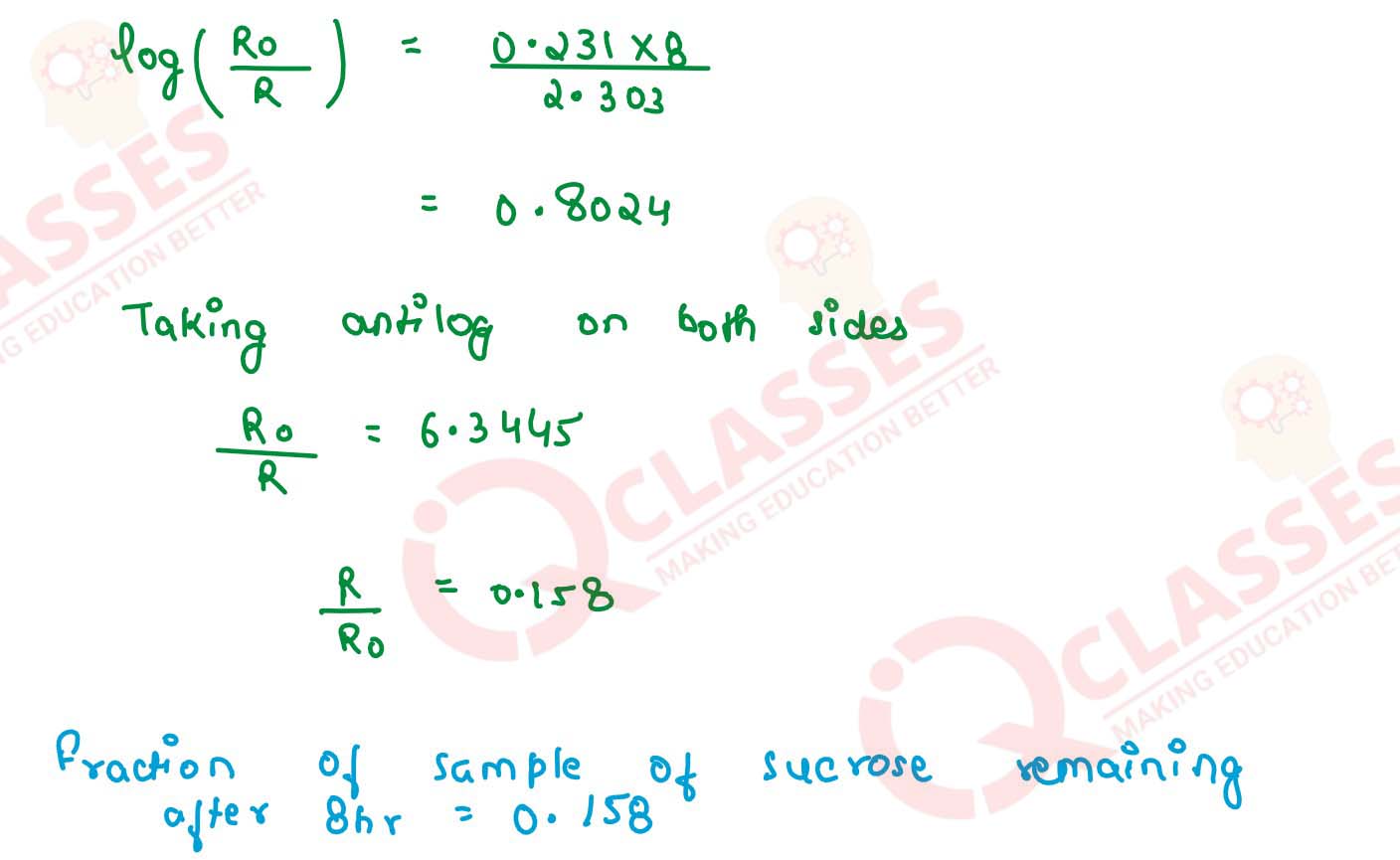


Q4.26
The decomposition of hydrocarbon follows the equation
k = (4.5 × 1011s-1) e-28000K/T
Calculate Ea Solution

k = (4.5 × 1011s-1) e-28000K/T
Calculate Ea Solution


Q4.27
The rate constant for the first order decomposition of H2O2
is given by the
following equation:
log k = 14.34 – 1.25 × 104K/T
Calculate Ea for this reaction and at what temperature will its half-period be 256 minutes? Solution
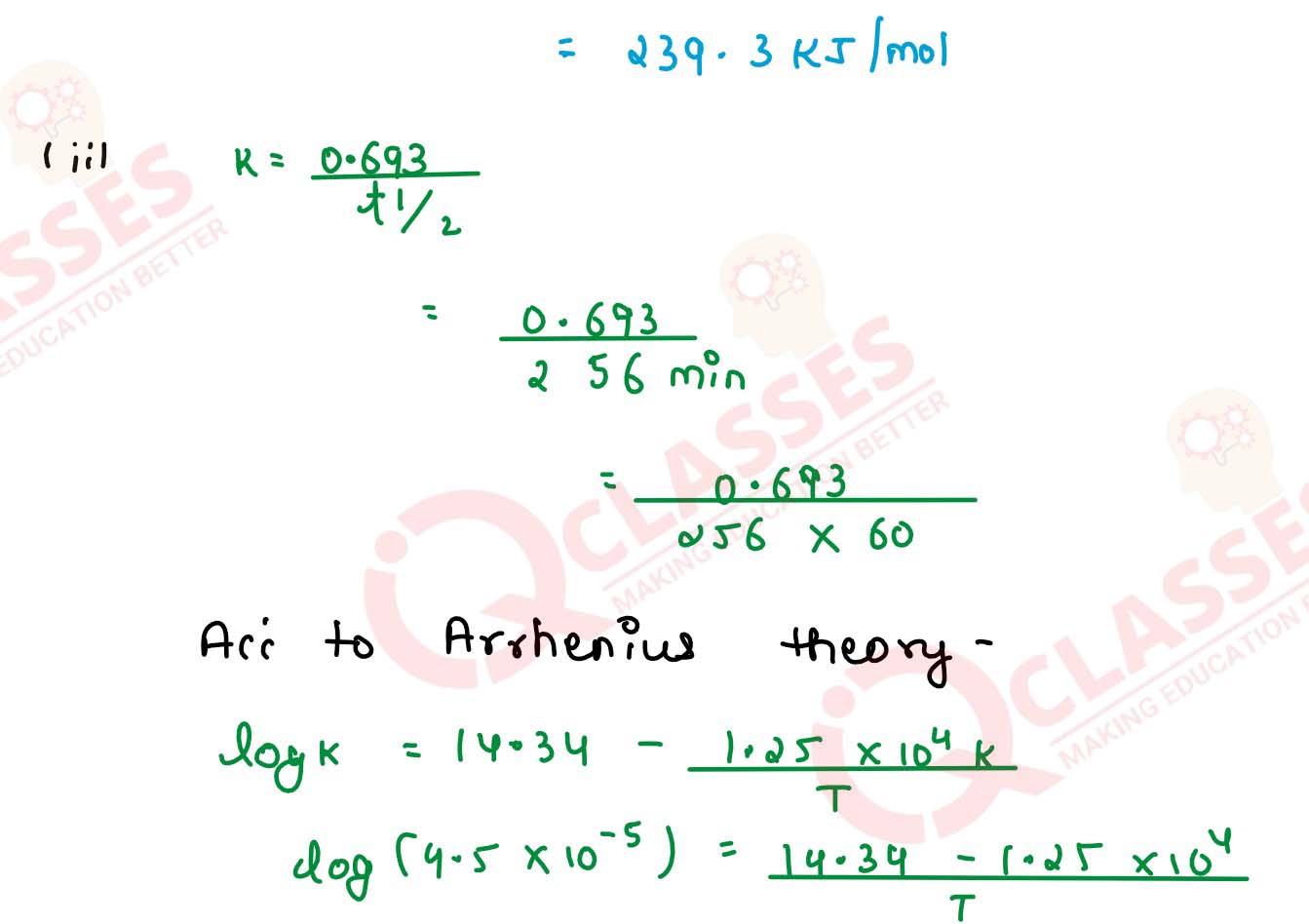

log k = 14.34 – 1.25 × 104K/T
Calculate Ea for this reaction and at what temperature will its half-period be 256 minutes? Solution



Q4.28
The decomposition of A into product has value of k as 4.5 × 103
s-1 at 10°C
and energy of activation 60 kJ mol-1. At what temperature would k be
1.5 × 104s
-1?
Solution

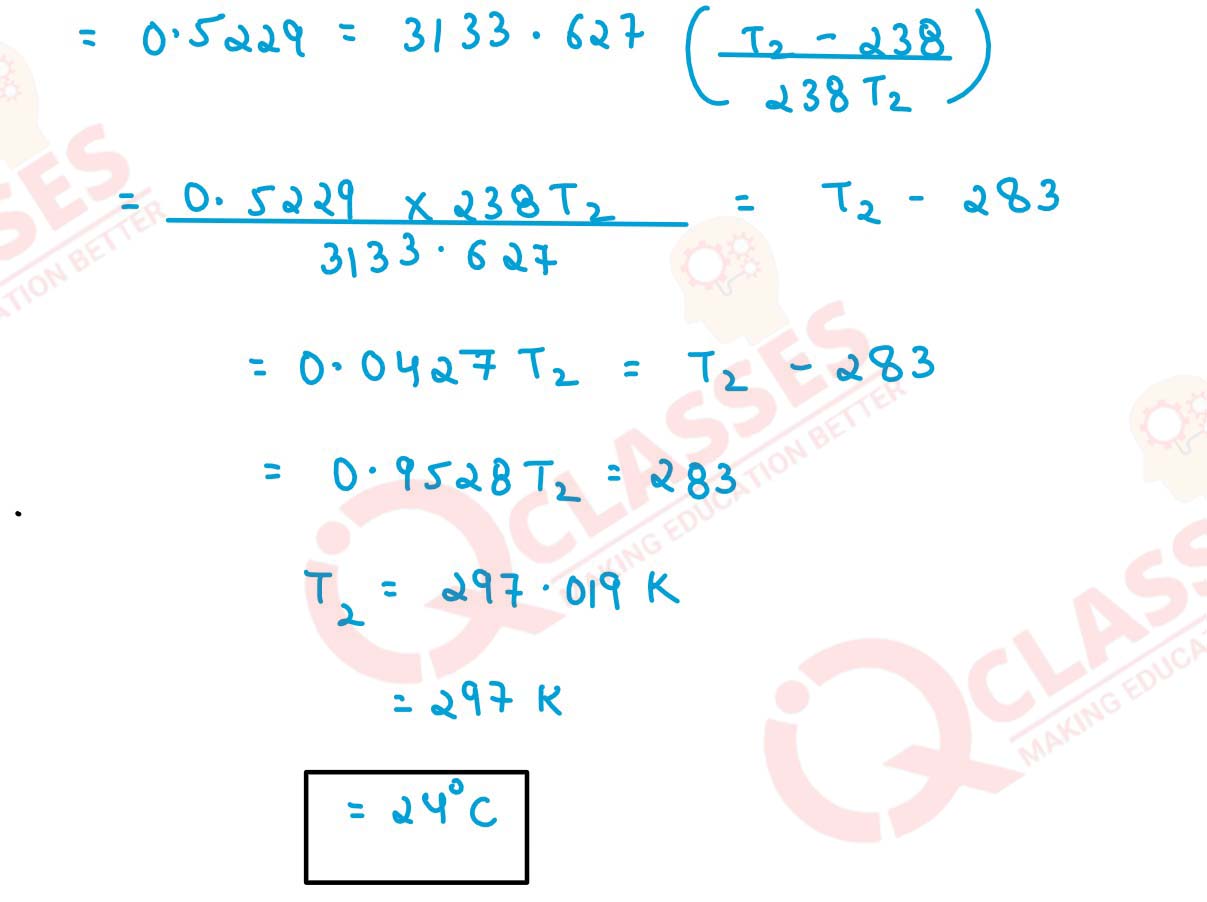


Q4.29
The time required for 10% completion of a first order reaction at 298K is
equal to that required for its 25% completion at 308K. If the value of A is
4 × 1010s-1. Calculate k at 318K and Ea.
Solution








Q4.30
The rate of a reaction quadruples when the temperature changes from
293 K to 313 K. Calculate the energy of activation of the reaction assuming
that it does not change with temperature.
Solution

